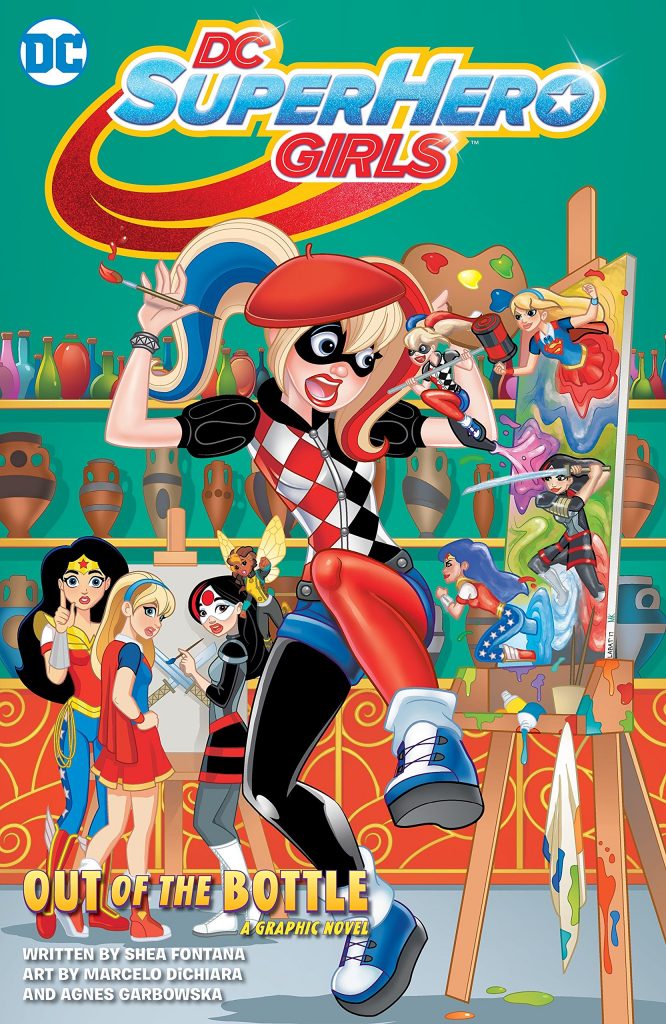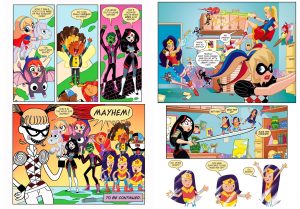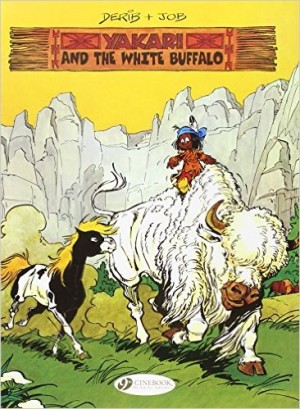Review by Ian Keogh
It’s a relatively slow start to Out of the Bottle, which promises much from the cover sequence of Harley Quinn letting a genie loose from a bottle. Before getting there we have to go through the comics produced by Katana, Supergirl, and Wonder Woman. Shea Fontana writes these to be consistent with their personalities, but surely even a young girl will find it difficult to cope with the saccharine overdose of Supergirl’s effort. That section, however, is essential to what follows, and getting past it leads to the far more imaginative content. This involves the mischievous character created by Harley bringing the creations from the other strips to life, Harley having used some off-limits magical potion in her painting.
The deliberate variations in artistic style mean the characters that come to life, are a mismatched looking bunch, but they’re smoothly incorporated into the friendly style used for the standard school scenes. Artists Agnes Garbowska (sample spread left) and Marcelo DiChiara (sample spread right) previously worked on Past Times at Super Hero High, so have a good grasp of keeping things interesting for a young audience without tipping the violence into scary territory. Their miniature Harley comes close, however, looking like a character who’d be more at home in Lenore’s violent and nihilistic world. The always excellent Mirka Andolfo also draws some pages disclosing the origin of the Enchantress.
Seeing the Superhero High cast run up against mini-versions of themselves is entertaining to begin with, but as the story continues it’s more dependent on a succession of comedy gags than any ongoing plot. This isn’t necessarily a bad thing, and has its moments, such as the paper derived Supergirl being felled by an illustration of kryptonite, but it’s dragged to the halfway point, which is too long. Things change at that halfway point, with an unexpected transformation that eventually complicates lives further. Fontana does have an imaginative method of eventually dealing with the paper creations, but the final pages drop into the obvious preaching so often a part of DC Super Hero Girls. Gee, it’s okay to see a therapist, and who knew the seemingly popular kids might have their own problems? The prescriptive nature of this advice is obvious and off-putting.





